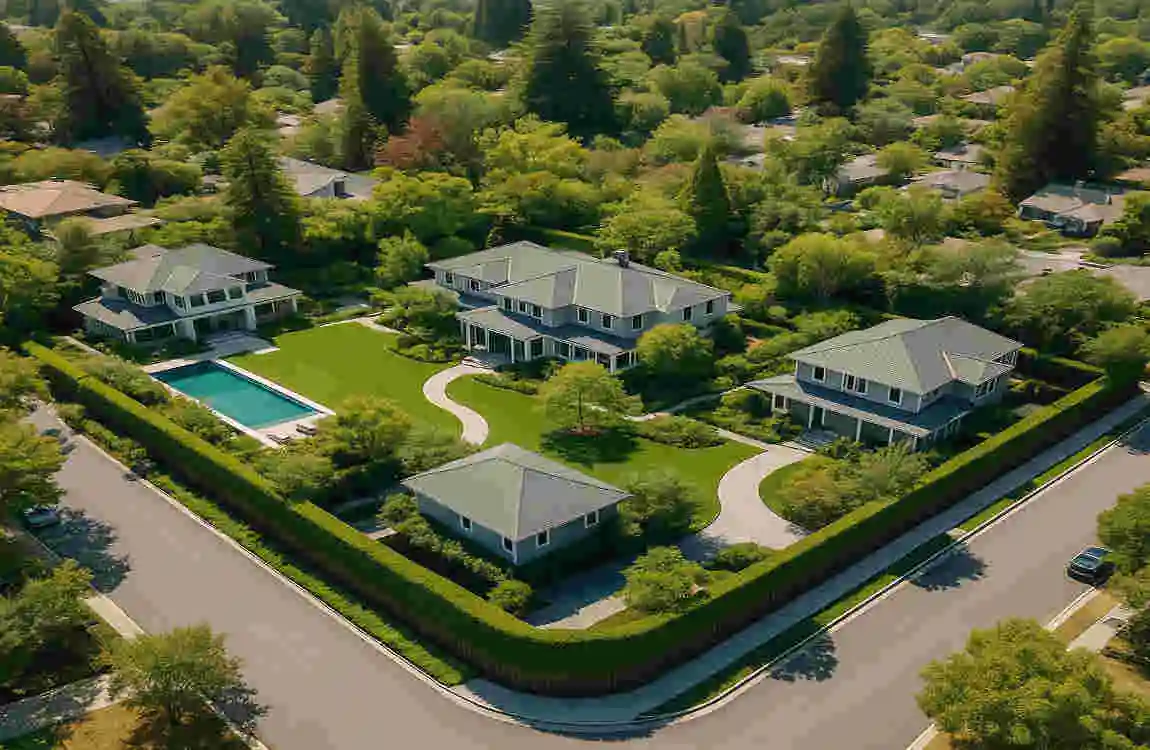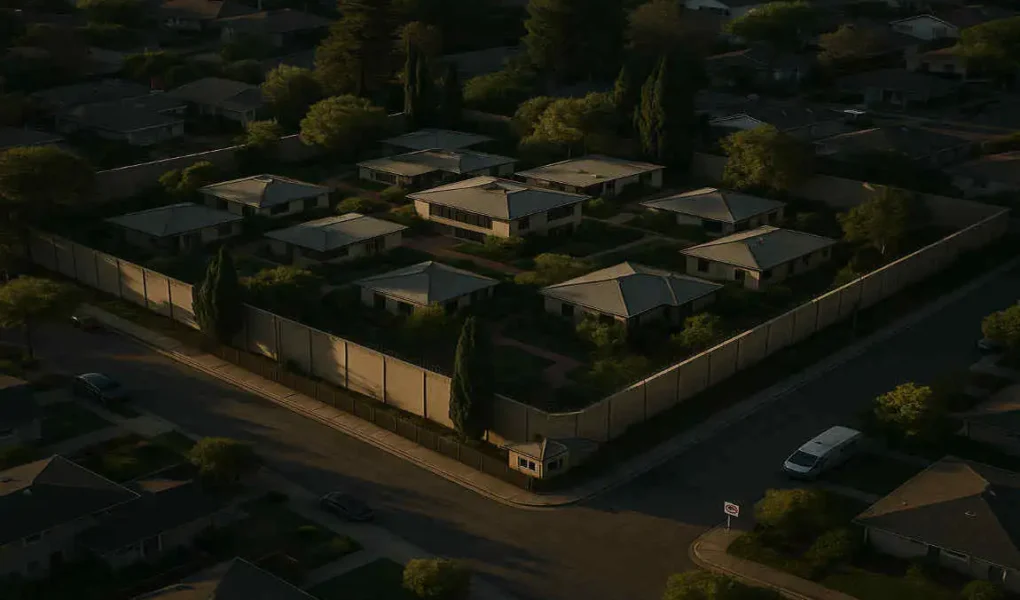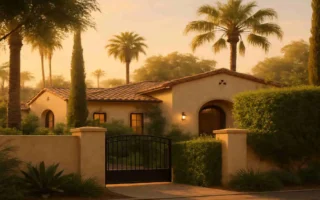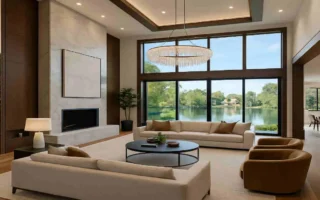Hey there, let’s dive into a story that’s as much about wealth and power as it is about privacy and community. We’re talking about Mark Zuckerberg’s sprawling 11-house estate in Palo Alto, California—a place that’s become a symbol of both billionaire extravagance and local frustration. If you’ve ever wondered how the ultra-rich live, or why a single person would need eleven houses in one neighborhood, you’re in the right spot. This isn’t just about the Zuckerberg Palo Alto house; it’s about the tension between personal space and public good, between a tech titan’s fortress and the community around it.
Picture this: a quiet, tree-lined neighborhood in Silicon Valley, where tech geniuses and families coexist. Then, one of the world’s wealthiest men starts buying up not just one house, but eleven of them, turning them into a private compound. Sounds like something out of a movie. But it’s real, and it’s sparked debates that go beyond just Palo Alto. Why does Zuckerberg need so much space? How does it affect the people living nearby? And what does it say about wealth and privacy in today’s world? Please stick with me as we unpack the story of the Zuckerberg Palo Alto house, from its jaw-dropping layout to the pushback it’s received from locals.
We’ll also look at the bigger picture—how billionaire homes like this impact neighborhoods and what it means for the future. Ready to get started? Let’s go!
Background: Who is Mark Zuckerberg?

A Tech Titan’s Rise to Fame
If you’ve ever scrolled through Facebook, you’ve already crossed paths with Mark Zuckerberg’s brainchild. Born in 1984 in White Plains, New York, Zuckerberg is the guy who turned a college dorm project into a global social media empire. He co-founded Facebook (now Meta) in 2004 at Harvard, and within a few years, he was a household name. Today, Meta isn’t just about connecting friends—it’s a tech giant that includes Instagram, WhatsApp, and cutting-edge virtual reality projects.
You may also read (inside alfonso ribeiros stunning toluca lake house tour).
From Dorm Room to Billions
Zuckerberg’s journey from a nerdy coder to one of the world’s wealthiest people is the stuff of legends. With a net worth hovering around $180 billion (depending on the day!), he’s not just rich—he’s in a league of his own. His success with Meta made him a billionaire before he hit 30, and along the way, he became a symbol of Silicon Valley’s innovation and ambition. But with great wealth comes great scrutiny, and that’s where his personal choices, like the Zuckerberg Palo Alto house, come into play.
Settling in Palo Alto
So why Palo Alto? Well, it’s the heart of Silicon Valley, home to tech giants, startups, and Stanford University. Zuckerberg moved there early in Facebook’s history, drawn by the area’s vibe and proximity to his company’s headquarters. Over the years, he’s invested heavily in real estate, but nothing compares to his 11-house estate. This isn’t just a home—it’s a statement. Curious about what this estate looks like? Let’s dive into the details next.
Overview of the Zuckerberg Palo Alto House Estate

A Sprawling Compound in Silicon Valley
Let’s paint a picture of the Zuckerberg Palo Alto house—or, more accurately, houses. We’re not talking about a single mansion here. This is a collection of 11 properties in the Crescent Park neighborhood of Palo Alto, bought over several years starting around 2012. Together, they form a massive private compound spanning over 17 acres. That’s huge, especially in a city where space is at a premium.
What’s Inside the Estate?
While exact details are kept under wraps (Zuckerberg values his privacy, after all), reports suggest the estate includes multiple homes, some of which have been renovated or rebuilt. The principal residence is believed to be a modern, custom-built house, while the others might serve as guest homes, staff quarters, or even office spaces. The layout is designed to create a buffer—think of it as a fortress of solitude right in the middle of a bustling neighborhood.
Security and Style
Security is a big deal for someone like Zuckerberg. The Zuckerberg Palo Alto house estate is reportedly equipped with high-end features like surveillance systems, tall fences, and private access roads. Architecturally, it’s not flashy in the Hollywood sense—think more understated luxury with clean lines and modern designs that blend into the Palo Alto aesthetic. But make no mistake, this place screams wealth in its sheer scale.
A Home for Family and More
Zuckerberg, his wife Priscilla Chan, and their kids use this estate as their primary residence. It’s not just a showpiece; it’s where they live their day-to-day lives. But with 11 houses, you’ve got to wonder—why so many? Is it just for space, or is there more to the story? Compared to the average Palo Alto home, which is already pricey at around $3 million, this compound is on another level. Let’s explore why he went for such an enormous setup.
Why an 11-House Estate? Exploring the Reasons Behind the Purchase
Privacy: A Top Priority
Let’s be real—if you’re Mark Zuckerberg, privacy isn’t just a luxury; it’s a necessity. As one of the most recognizable faces in tech, he’s constantly in the spotlight. The Zuckerberg Palo Alto house estate isn’t just about living large; it’s about creating a safe haven. By buying up 11 properties, he’s built a literal wall of protection around his family, keeping paparazzi, fans, and potential threats at a distance.
Shielding Family from the Public Eye
Zuckerberg and his wife, Priscilla, have young children. Can you imagine trying to raise kids with cameras following your every move? Owning multiple homes around a central residence creates a buffer zone. It means fewer nosy neighbors or random passersby peeking into their backyard. It’s not just paranoia—it’s a practical move for someone with his level of fame.
A Hedge Against Change
Palo Alto is growing fast, with urban development creeping into even the quietest neighborhoods. By owning so much land, Zuckerberg ensures that no one can build a high-rise or noisy project next door. It’s like buying peace of mind. Plus, some speculate he might be using these properties as a long-term investment. Real estate in Silicon Valley only goes up, right?
More Than Just a Home?
There’s also talk that not all 11 houses are for personal use. Could some be for staff, security teams, or even future projects? We don’t know for sure, but it’s clear that the Zuckerberg Palo Alto house setup is as much about strategy as it is about comfort. So, what do the locals think about this billionaire fortress? Spoiler: not everyone’s thrilled.
Community Pushback and Local Concerns
A Neighborhood Divided
When you think of Palo Alto, you might picture a cozy, tight-knit community. But the Zuckerberg Palo Alto house estate has stirred up some serious drama. Many residents in Crescent Park aren’t happy about having a billionaire’s compound in their backyard. It’s not personal against Zuckerberg, but more about what his estate represents—a disruption to the neighborhood’s vibe.
You may also read (inside austin mcbrooms dream mansion a stunning new house tour).
Aesthetics and Urban Planning Woes
One big complaint is how the estate changes the look and feel of the area. Eleven houses under one owner mean fewer families living there, which some say makes the streets feel empty or “ghostly.” Plus, the renovations and security upgrades—like high walls and gates—clash with Palo Alto’s open, suburban Style. Locals worry it sets a precedent for more gated enclaves in a city that prides itself on community.
Zoning and Regulatory Headaches
Then there’s the issue of rules. Palo Alto has strict zoning laws to keep neighborhoods residential and accessible. Some residents have questioned whether Zuckerberg’s estate bends these rules, especially with rumors of combining lots or limiting public access to certain streets. While no major legal battles have erupted, there’s been chatter about petitions and complaints to the city council.
A Deeper Impact on Community
Beyond looks or laws, there’s a feeling of disconnection. Some neighbors feel like the estate creates an “us vs. them” divide—here’s a billionaire who can buy up half the block while others struggle with skyrocketing housing costs. It’s a microcosm of larger tensions in Silicon Valley, where wealth inequality is glaring. Have you ever felt like money changes the dynamic of a place you love? That’s what’s happening here.
The Bigger Picture
This pushback isn’t just about one man or one estate. It’s part of a broader conversation about how the ultra-wealthy shape communities. Should someone be able to “buy” privacy at the expense of a neighborhood’s character? Let’s dive deeper into this debate next.
Privacy vs. Community: The Larger Debate
A Balancing Act
Here’s a question for you: where do you draw the line between someone’s right to privacy and a community’s right to, well, be a community? The Zuckerberg Palo Alto house saga brings this dilemma front and center. On one hand, Zuckerberg has every right to protect his family and live how he wants. On the other hand, his choices impact everyone around him.
Tech Billionaires and Neighborhoods
Zuckerberg isn’t the only tech mogul buying up big chunks of land. From Jeff Bezos to Larry Page, Silicon Valley is dotted with sprawling estates owned by the ultra-rich. These properties often come with similar complaints—too much space for one person, too little interaction with locals. In some cases, like in San Francisco, entire blocks have been transformed into private compounds, leaving residents feeling pushed out.
Other High-Profile Examples
Take a look at Oprah Winfrey’s estate in Montecito, California. While it’s stunning, some locals grumble about traffic and privacy walls disrupting the area’s charm. Or consider Bill Gates’ massive compound in Washington, often criticized for its sheer size. These stories echo the Zuckerberg Palo Alto house drama—wealth buys space, but it can also purchase resentment.
Ethical Questions
So, is it ethical to own 11 houses in a housing-strapped area like Palo Alto? Some argue it’s just capitalism at work—Zuckerberg earned his money, so he can spend it. Others say it’s tone-deaf in a region where many can’t afford a single home. What do you think? Should there be limits on how much land one person can control in a tight-knit community? This debate isn’t going away anytime soon.
Real Estate Market Impact in Palo Alto
Skyrocketing Prices and Desirability
Palo Alto was already one of the priciest places to live in the U.S. before the Zuckerberg Palo Alto house came into the picture. But when a billionaire like Zuckerberg sets up shop, it sends ripples through the market. His estate has arguably made the Crescent Park area even more desirable for wealthy buyers, driving up property values. Great if you’re selling, not so great if you’re trying to buy.
Housing Availability Takes a Hit
Here’s the flip side: owning 11 homes means 10 fewer families can live in that space. In a city where housing is already scarce, such purchases fuel frustration. Palo Alto struggles with density issues—there’s not enough room for everyone who wants to live near Silicon Valley’s job hubs. So when one person snaps up a whole block, it stings.
Trends in Luxury Estates
Zuckerberg’s compound also reflects a growing trend in Silicon Valley: luxury estates and private enclaves. More tech moguls are following suit, buying multiple properties to create mini-fortresses. It’s changing the landscape—literally. Gated communities and mega-homes are popping up, and some worry Palo Alto could lose its small-town charm.
Here’s a quick look at how billionaire purchases impact local markets:
| Factor | Impact of Zuckerberg’s Estate |
|---|---|
| Property Values | Increased due to prestige and demand in Crescent Park |
| Housing Availability | Reduced as multiple homes are off the market |
| Neighborhood Dynamics | Shift toward exclusivity and less community interaction |
What does this mean for the average person hoping to settle in Palo Alto? It’s a more challenging game, no doubt. Let’s see how Zuckerberg tries to balance this with his public image.
Zuckerberg’s Philanthropy and Public Image Amid Controversies
Giving Back to Silicon Valley
Despite the flak over the Zuckerberg Palo Alto house, Mark Zuckerberg isn’t just hoarding wealth. He and Priscilla Chan are big on philanthropy. Through the Chan Zuckerberg Initiative, they’ve poured millions into education, health, and community projects, including in Palo Alto. They’ve funded local schools and affordable housing initiatives, which some see as a way to offset criticism.
Public Perception vs. Reality
Still, not everyone’s buying the “good guy” narrative. While Zuckerberg’s donations are massive, critics argue they don’t address the root issues—like how his estate ties up housing. To some, it feels like a PR move: give with one hand, take with the other. Have you ever wondered if significant donations can really make up for personal choices that may be unpopular?
Walking a Tightrope
Zuckerberg’s public image is a mixed bag. He’s admired for Meta’s innovation but often criticized for privacy scandals and his extravagant lifestyle, including his estate. Philanthropy helps soften the blow, but in Palo Alto, the tension lingers. Locals appreciate the money for schools, but they’d also like to see their neighborhood stay accessible. It’s a tricky balance for a billionaire to strike.
Future Outlook: What’s Next for Zuckerberg’s Palo Alto Estate?
Possible Expansions?
So, what’s next for the Zuckerberg Palo Alto house compound? There’s always speculation about more purchases or renovations. Could he buy even more properties to expand his buffer zone? Or might he scale back if community pressure mounts? Only time will tell, but given his focus on privacy, I wouldn’t bet against further growth.
Community and Policy Changes
On the flip side, Palo Alto might tighten its zoning laws or push for more transparency around mega-estates. Residents could band together for stronger advocacy—think petitions or public campaigns. It’s not hard to imagine a future where billionaire homes face more scrutiny or restrictions in tight housing markets.
Silicon Valley’s Evolving Landscape
Zooming out, the Zuckerberg Palo Alto house is just one piece of a bigger puzzle. As Silicon Valley grows, so does the clash between wealth and community. Will we see more private fortresses, or will cities fight back to preserve their identity? What do you think the future holds for places like Palo Alto?
Here are a couple of possibilities to consider:
- Increased Regulation: Cities might limit how many properties one person can buy in residential zones.
- Community Pushback: More organized efforts from locals could pressure billionaires to engage or downsize.
Conclusion
We’ve covered a lot of ground, haven’t we? From the jaw-dropping scale of the Zuckerberg Palo Alto house—an 11-house estate that’s as much fortress as it is home—to the community tensions it’s sparked, this story is a window into the challenges of wealth and privacy in today’s world. We’ve seen how Zuckerberg’s need for security clashes with Palo Alto’s desire for connection, how his purchases impact housing, and how his philanthropy tries to balance the scales.
At its core, this isn’t just about one billionaire or one neighborhood. It’s about a growing divide—between those who can afford to buy entire blocks and those who feel squeezed out. What does the Zuckerberg Palo Alto house represent to you? Is it a symbol of success, or a reminder of inequality? As Silicon Valley evolves, these questions will only get louder.
You may also read (inside lil yachtys 2 million lake spivey mansion tour).




